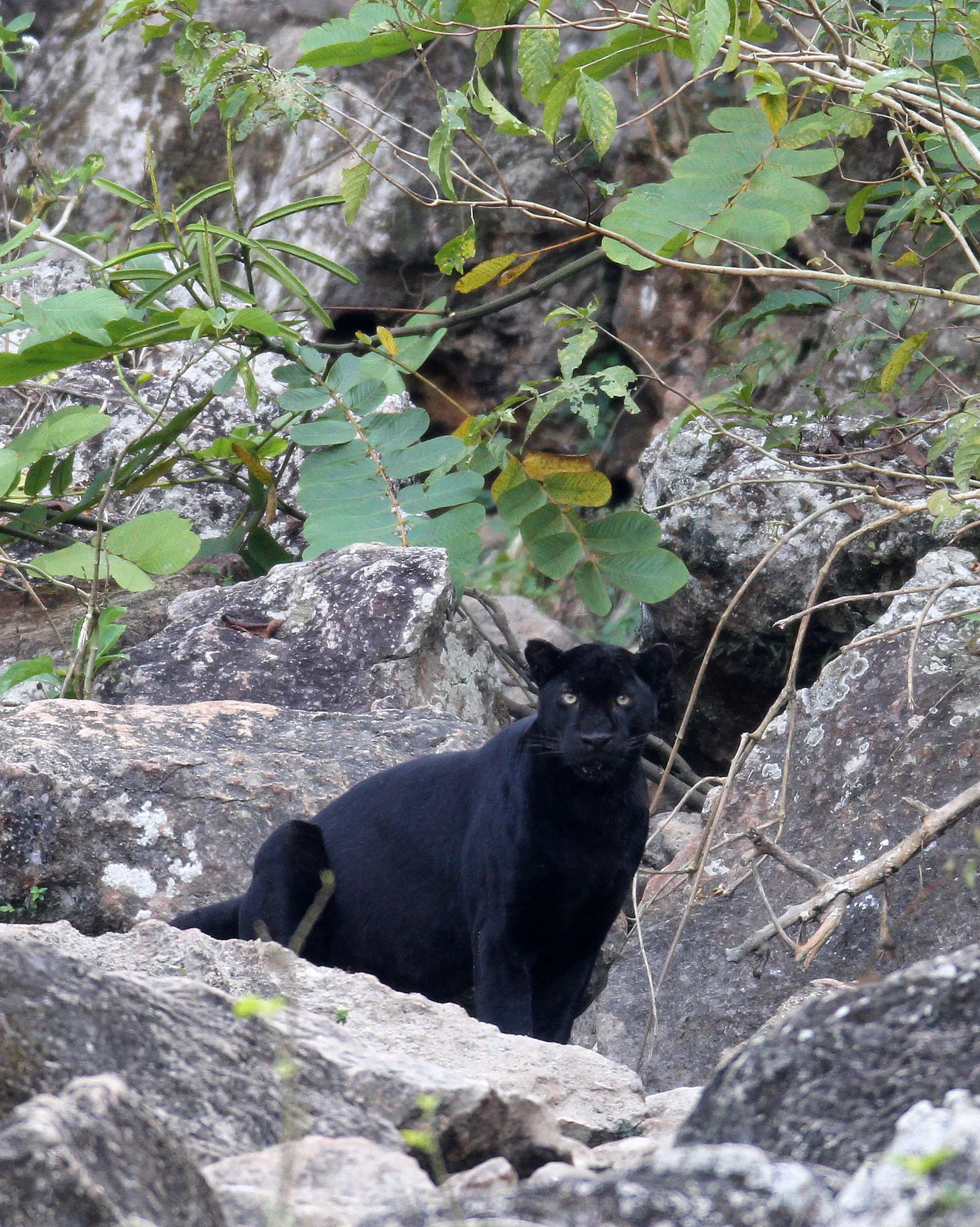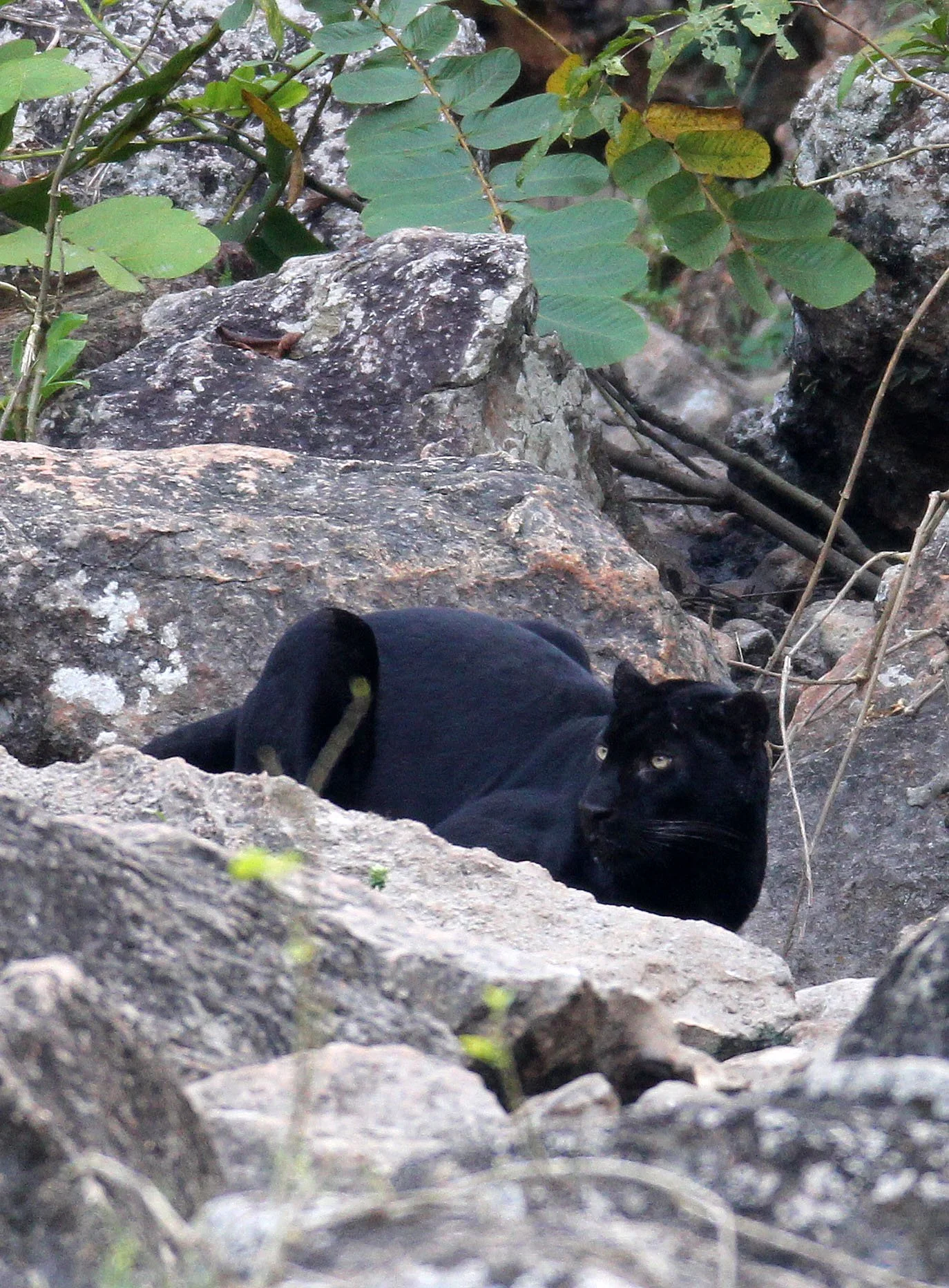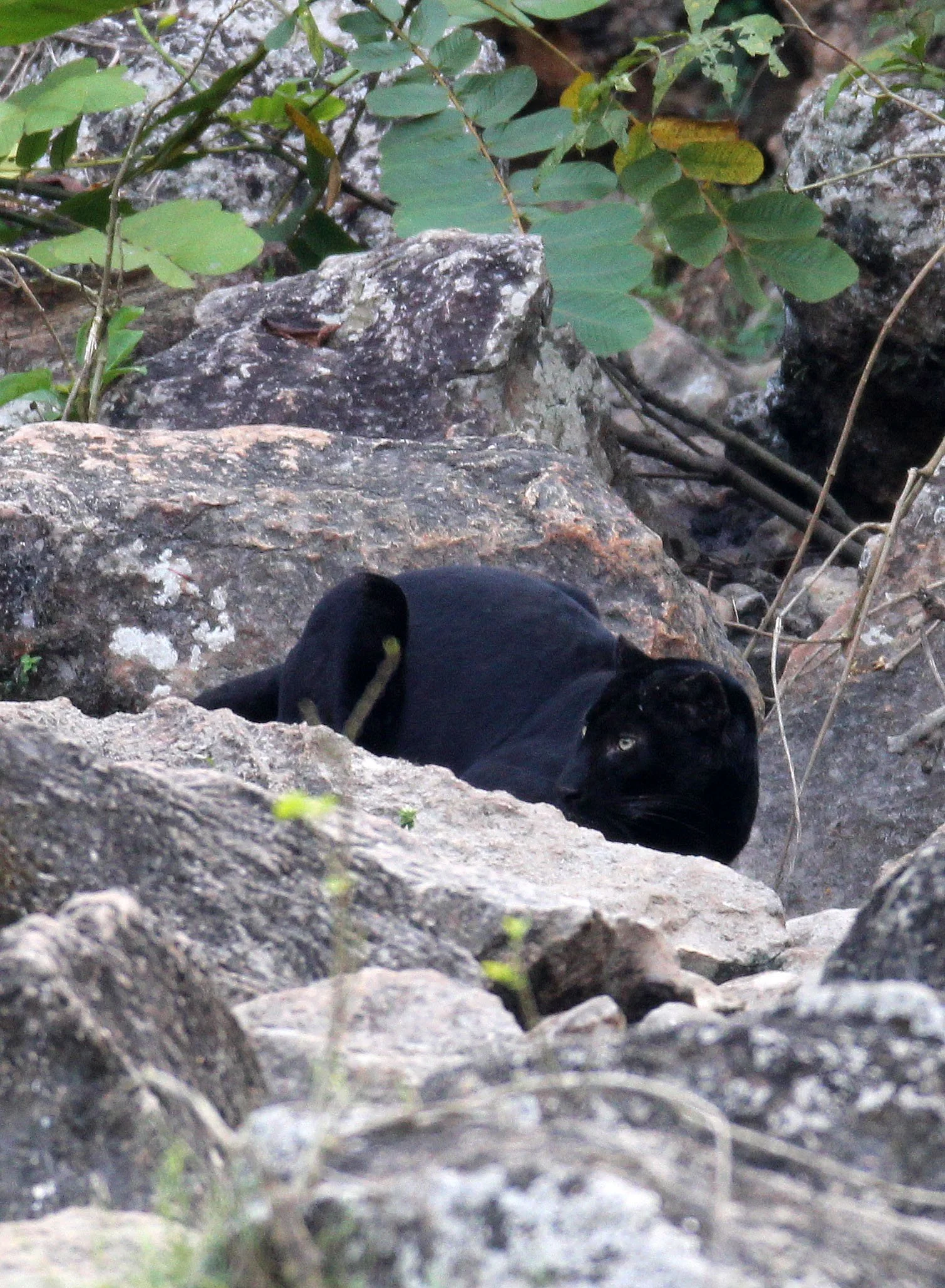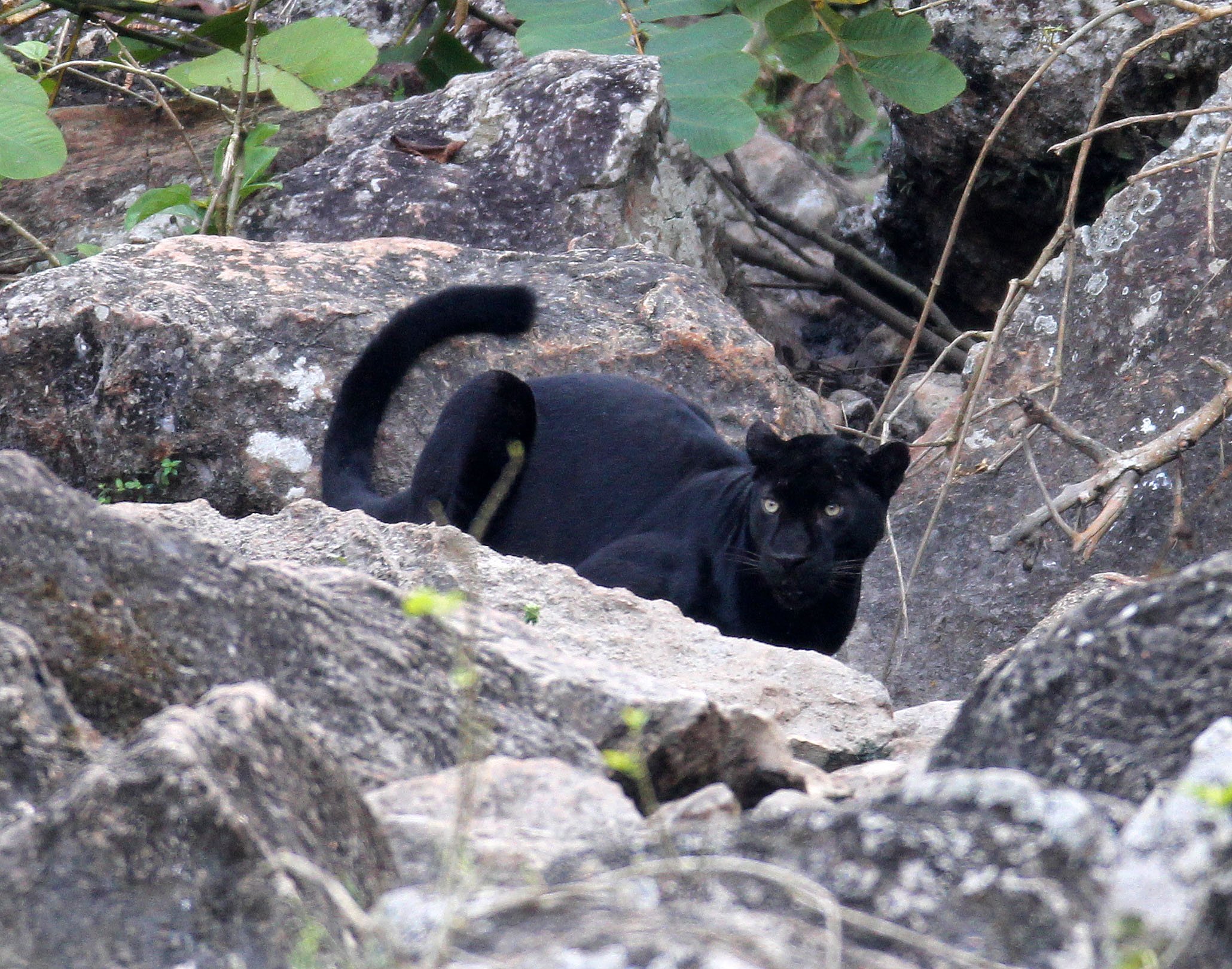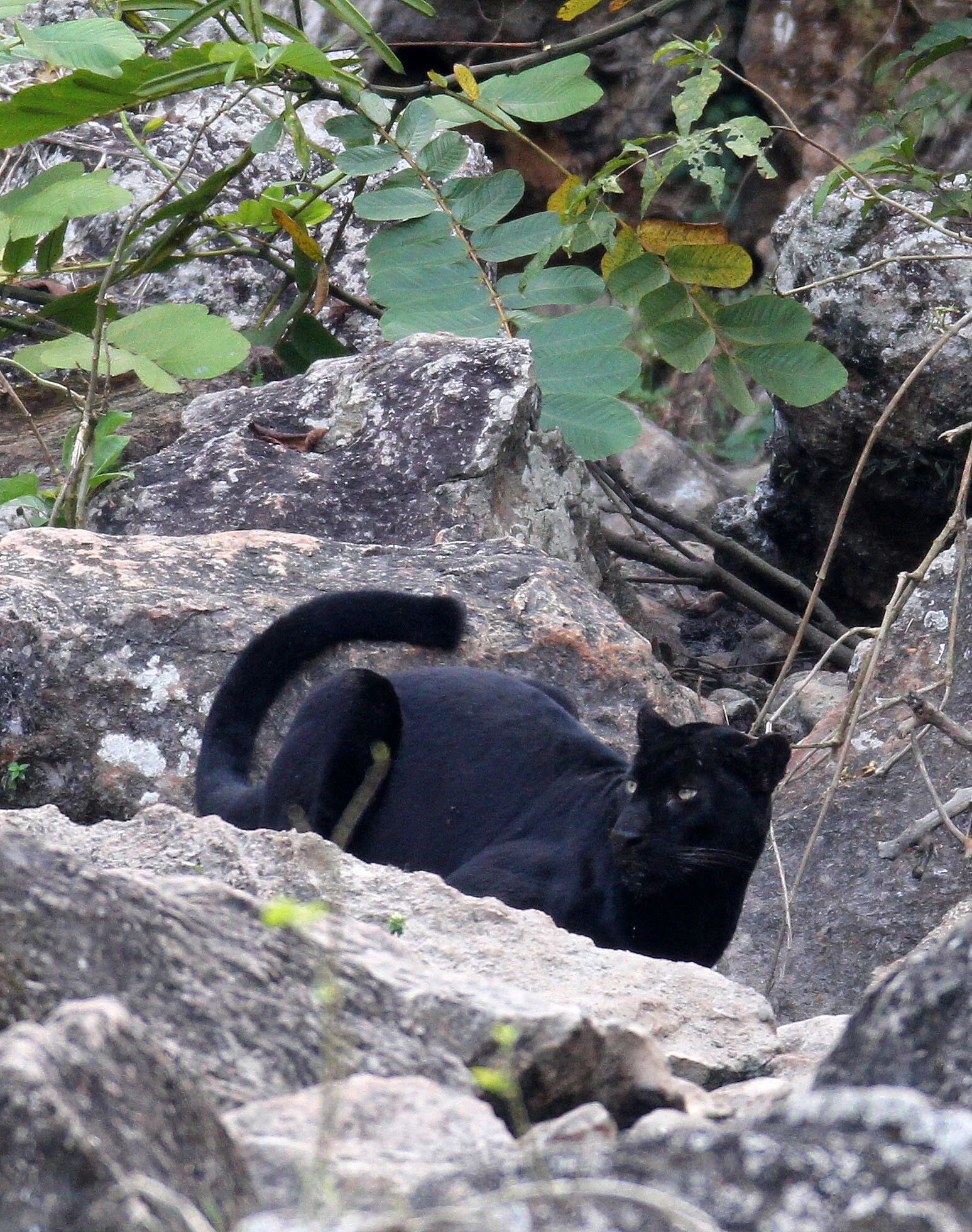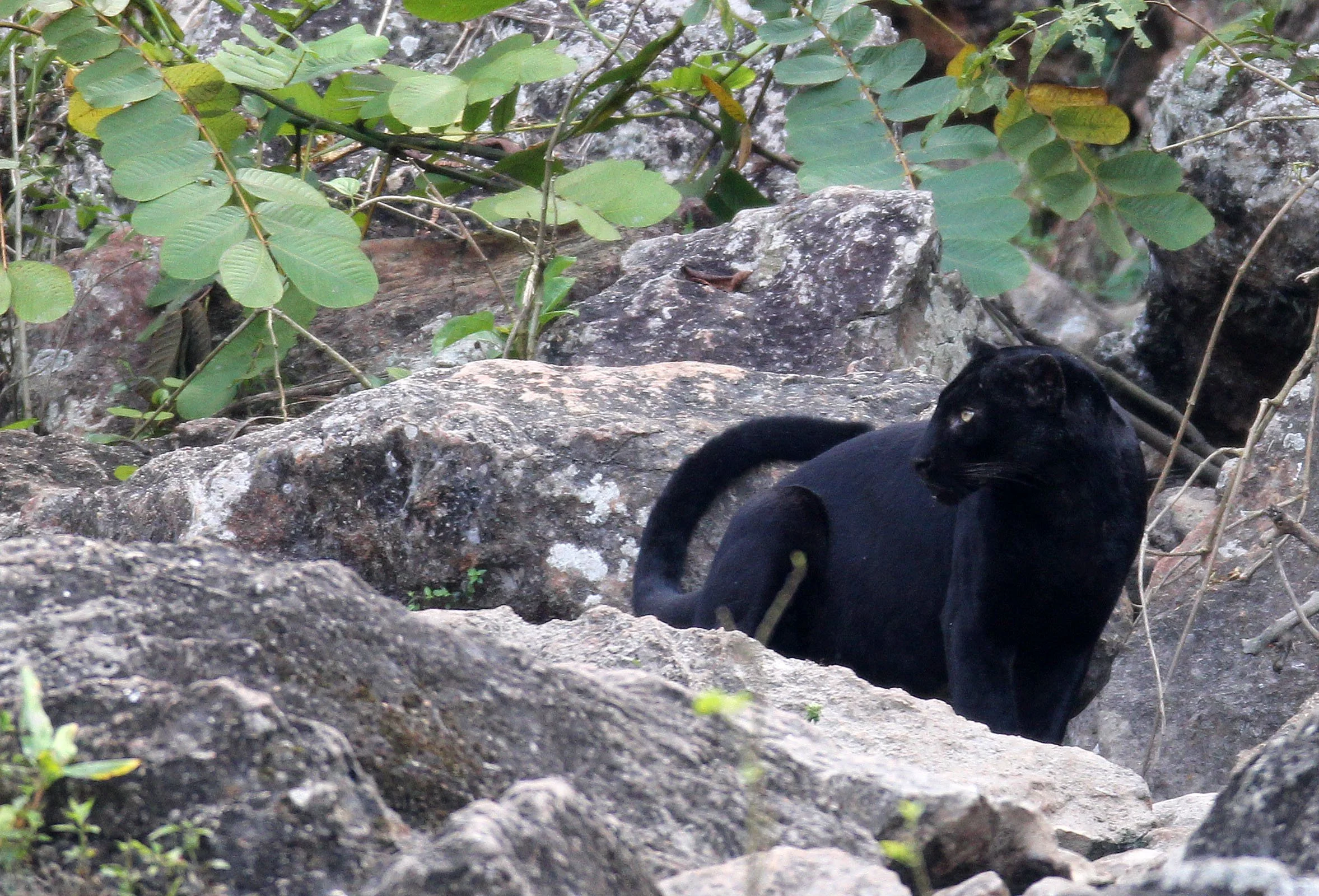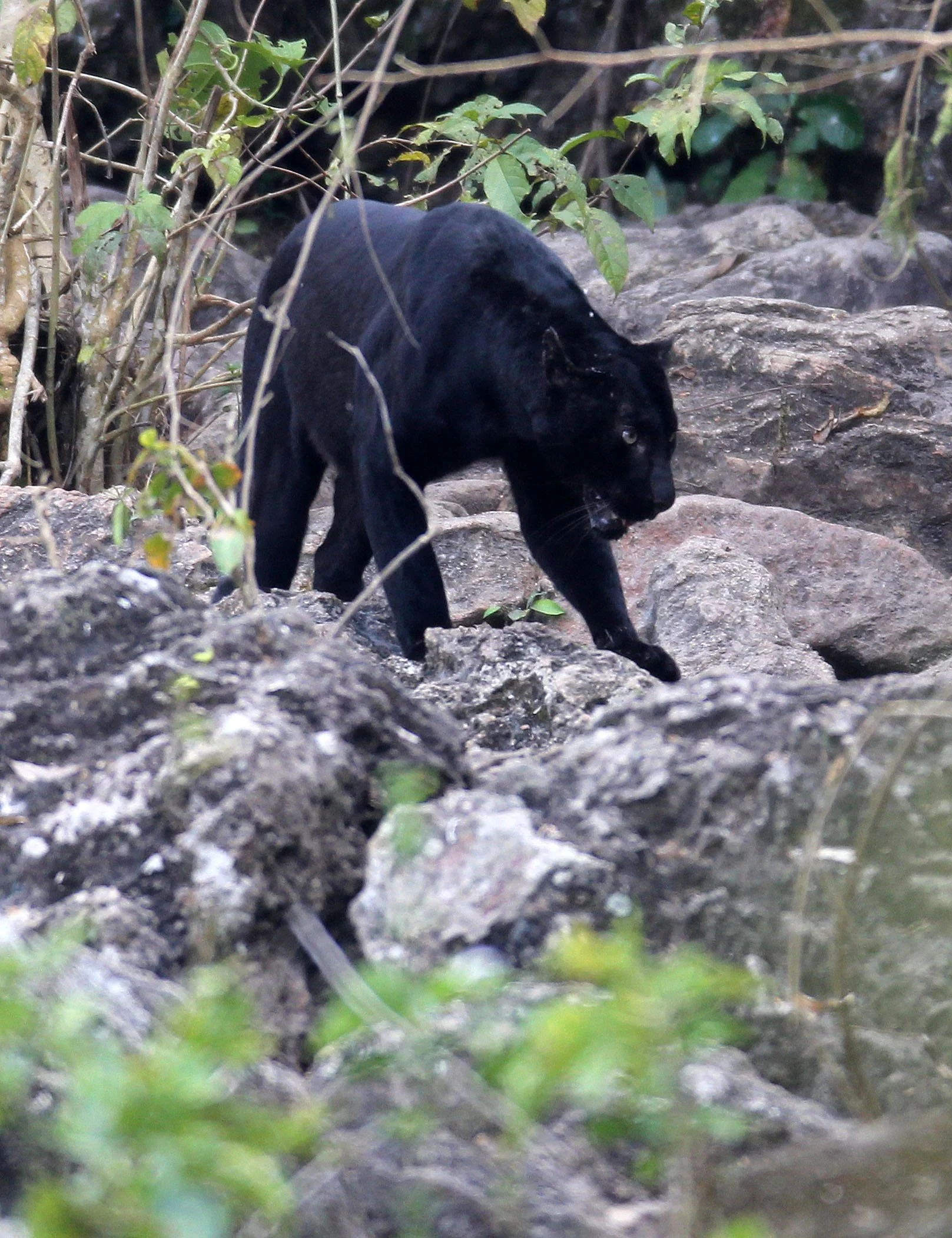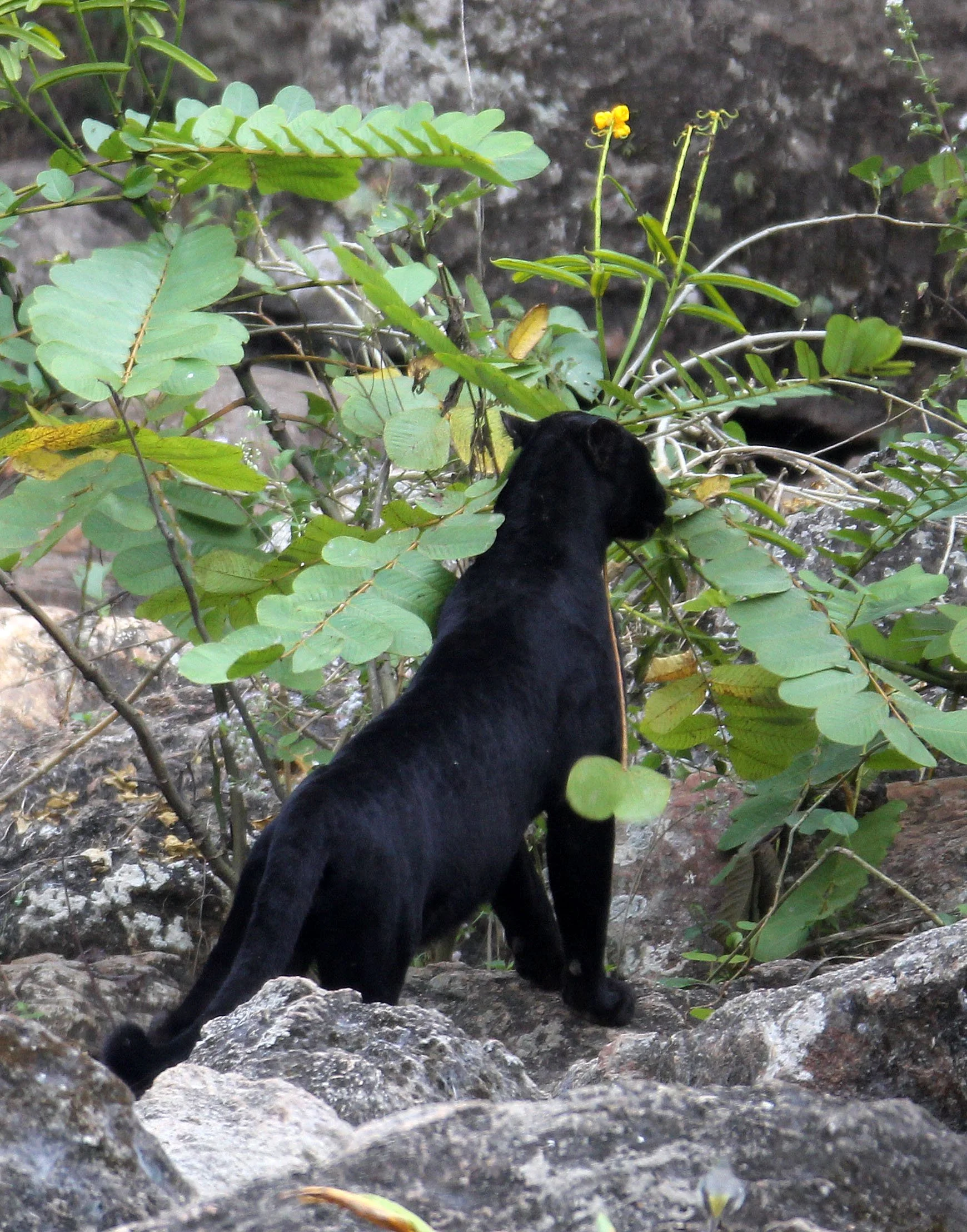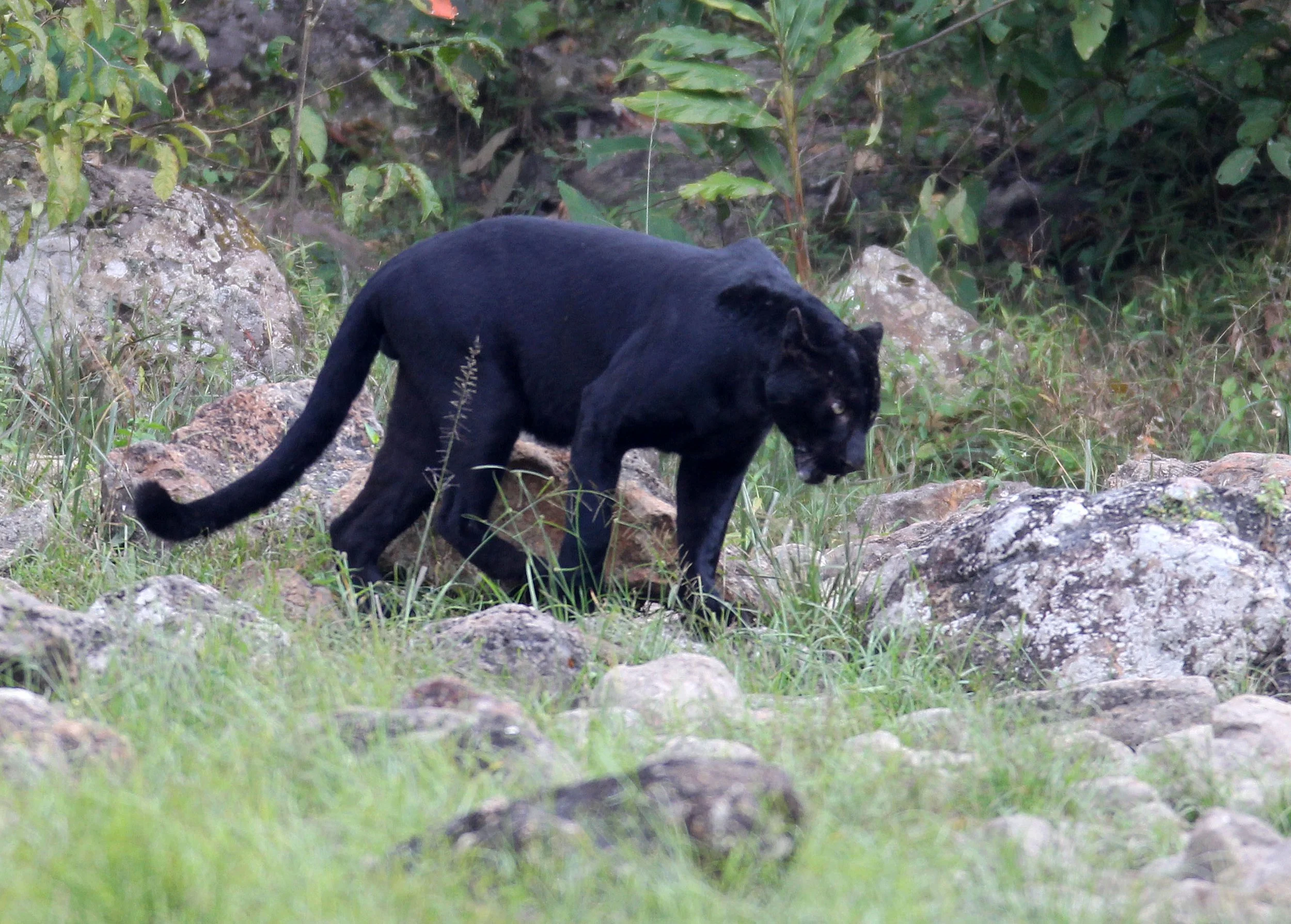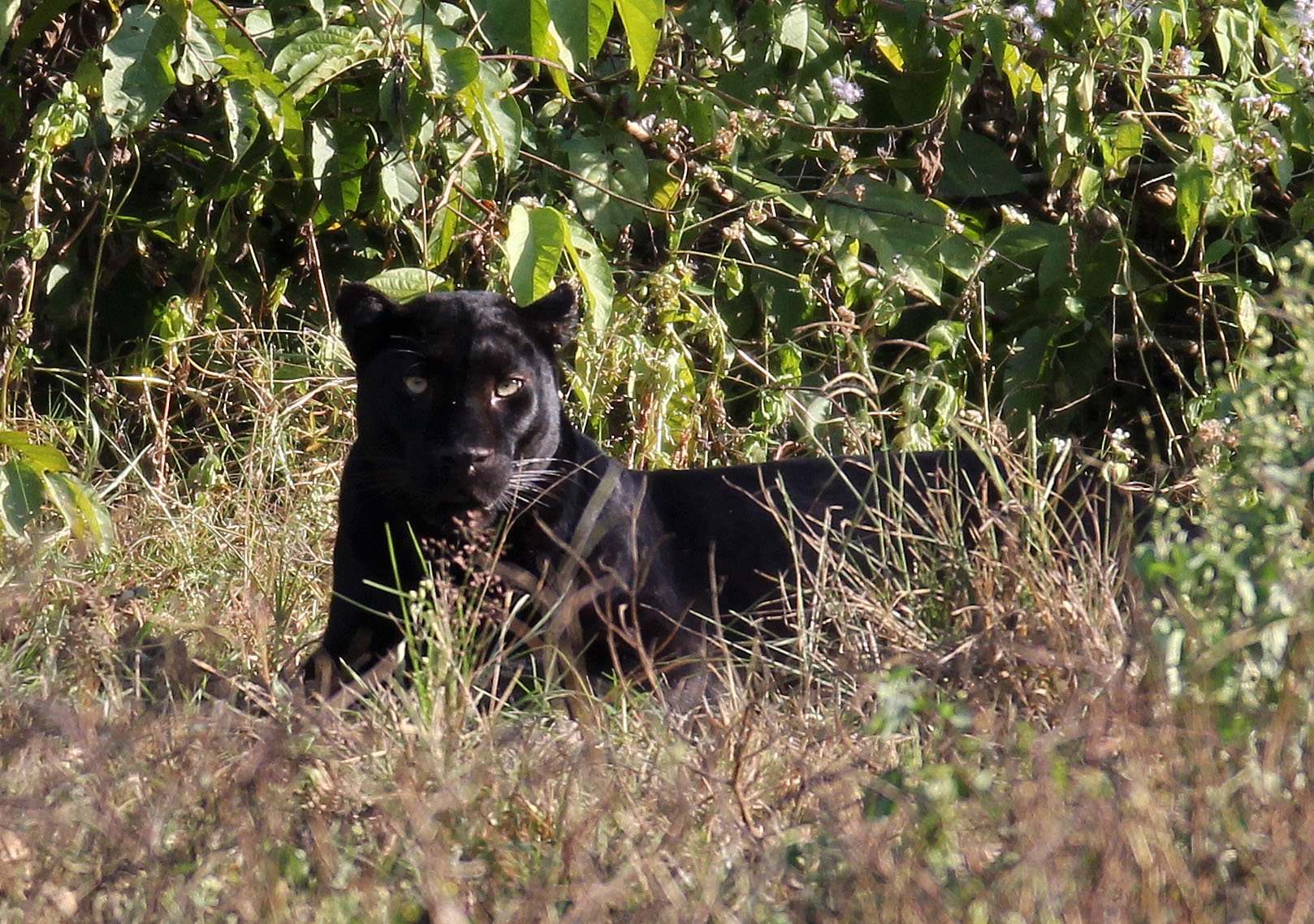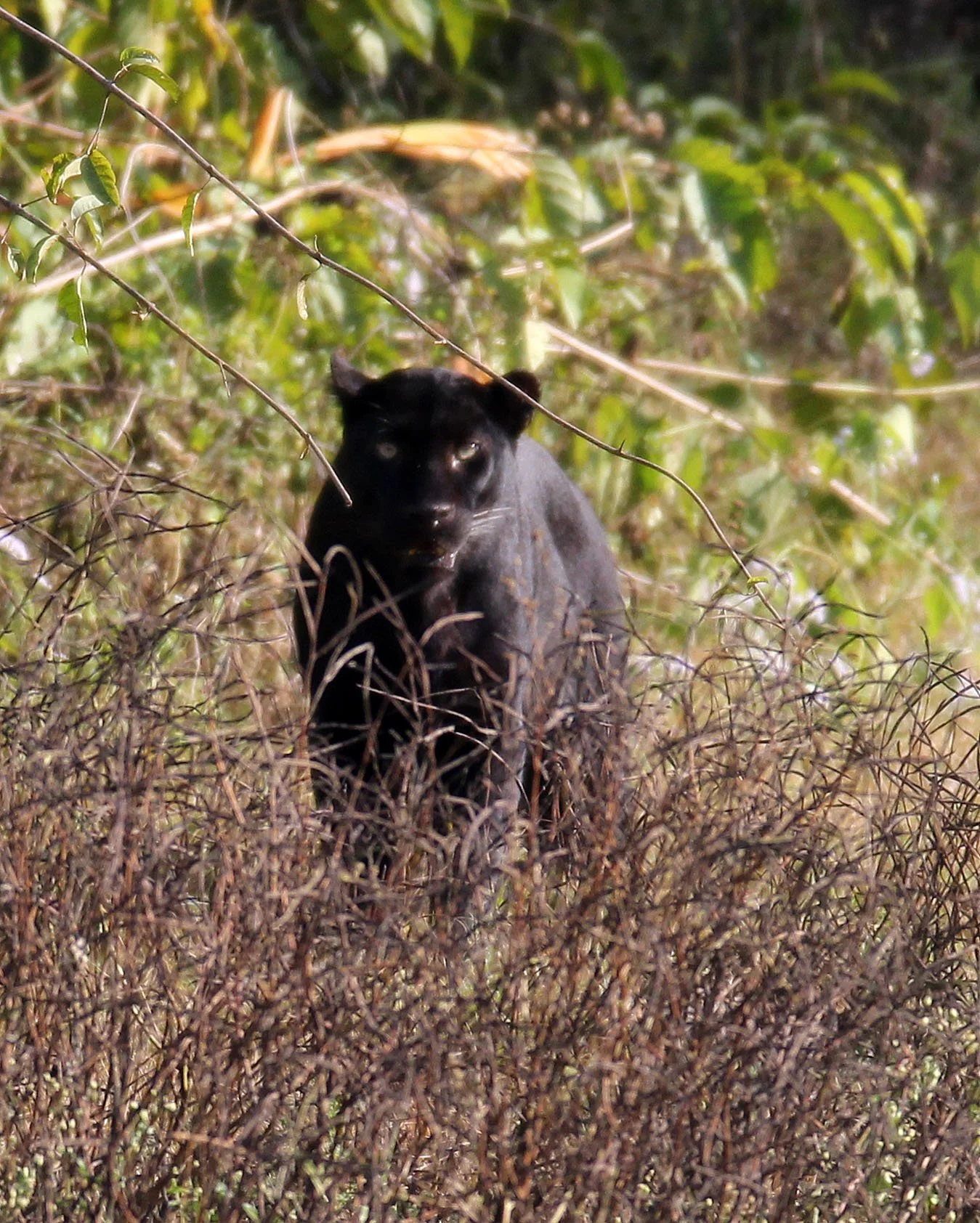
Panthera pardus delacouri , Indochinese Leopard
Melanistic leopards are also called black panthers. Melanism in leopards is caused by a recessive allele and inherited as a recessive trait. Interbreeding in melanistic leopards produces a significantly smaller litter size than is produced by normal pairings. The black leopard is common foremost in tropical and subtropical moist forests like the equatorial rainforest of the Malay Peninsula and the tropical rainforest on the slopes of some African mountains such as Mount Kenya. Between January 1996 and March 2009, leopards were photographed at 16 sites in the Malay Peninsula in a sampling effort of more than 1,000 camera trap nights. Of the 445 photographs of melanistic leopards, 410 were taken in study sites south of the Kra Isthmus, where the non-melanistic morph was never photographed. These data indicate the near-fixation of the dark allele in the region. The expected time for the fixation of this recessive allele due to genetic drift alone ranged from about 1,100 years to about 100,000 years. Pseudomelanistic leopards have also been reported. In India, nine pale and white leopards were reported between 1905 and 1967. Leopards exhibiting erythrism were recorded between 1990 and 2015 in South Africa's Madikwe Game Reserve and in Mpumalanga. The cause of this morph known as a "strawberry leopard" or "pink panther" is not well understood.
Indochinese Leopard (Panthera pardus delacouri) - Melanistic form seen in Huai Kha Khaeng










































